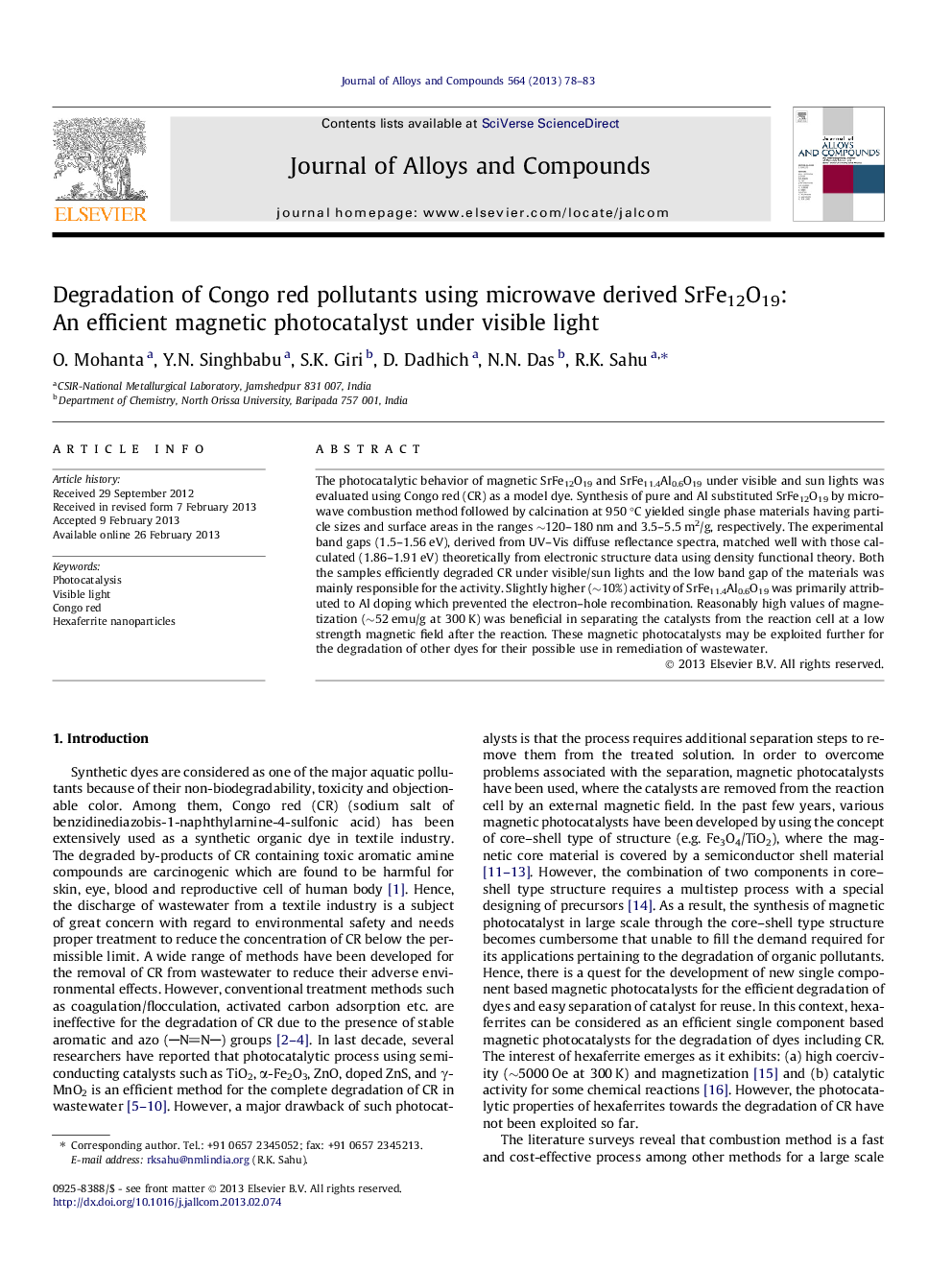| Article ID | Journal | Published Year | Pages | File Type |
|---|---|---|---|---|
| 1614368 | Journal of Alloys and Compounds | 2013 | 6 Pages |
The photocatalytic behavior of magnetic SrFe12O19 and SrFe11.4Al0.6O19 under visible and sun lights was evaluated using Congo red (CR) as a model dye. Synthesis of pure and Al substituted SrFe12O19 by microwave combustion method followed by calcination at 950 °C yielded single phase materials having particle sizes and surface areas in the ranges ∼120–180 nm and 3.5–5.5 m2/g, respectively. The experimental band gaps (1.5–1.56 eV), derived from UV–Vis diffuse reflectance spectra, matched well with those calculated (1.86–1.91 eV) theoretically from electronic structure data using density functional theory. Both the samples efficiently degraded CR under visible/sun lights and the low band gap of the materials was mainly responsible for the activity. Slightly higher (∼10%) activity of SrFe11.4Al0.6O19 was primarily attributed to Al doping which prevented the electron–hole recombination. Reasonably high values of magnetization (∼52 emu/g at 300 K) was beneficial in separating the catalysts from the reaction cell at a low strength magnetic field after the reaction. These magnetic photocatalysts may be exploited further for the degradation of other dyes for their possible use in remediation of wastewater.
Graphical abstractFigure optionsDownload full-size imageDownload as PowerPoint slideHighlights► Microwave assisted synthesis of pure and Al substituted SrFe12O19 nanoparticles. ► The magnetic photocatalyst efficiently degrades Congo red under visible/sun lights. ► Reduction of band gap to ∼1.5 eV is most contributing factor for the activity under visible/sun lights. ► Al doping prevents the electron–hole recombination of SrFe12O19 to enhance the efficacy by 10%. ► Easy recovery of photocatalysts by low strength magnetic fields after the catalytic run for possible reuse.
